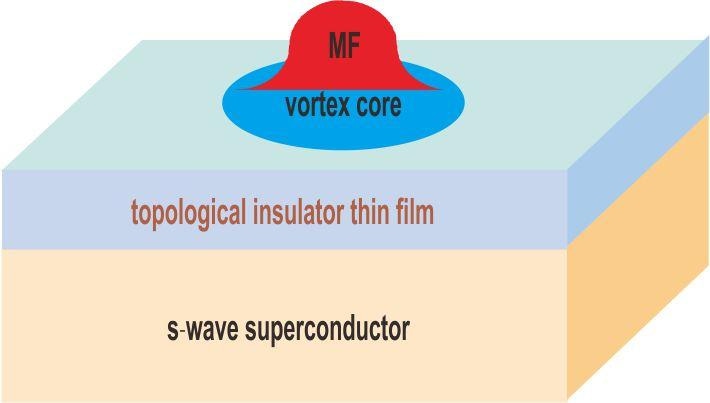Mar 20 2017
The detection of Majorana fermion is one of the hotspots in the study of condensed matter recently. The research group in Shanghai Jiao Tong University (SJTU) achieved great breakthrough in the detection of Majorana fermion in the artificial topological superconductor, which is the heterostructure of a normal superconductor and a topological insulator. Majorana fermion was successfully detected in this system.
 Topological insulator/superconductor heterostructure. Majorana fermion exists in the vortex core on the surface of the heterostructure. (Credit: Science China Press)
Topological insulator/superconductor heterostructure. Majorana fermion exists in the vortex core on the surface of the heterostructure. (Credit: Science China Press)
A review article on the research of Majorana fermion in the artificial topological superconductor was recently published in Science China Physics, Mechanics & Astronomy (SCPMA), 60, 057401, 2017. In this article, a series of significant experimental results from Prof. Jin-Feng Jia's group in SJTU, and their co-workers were discussed.
Majorana fermion is an exotic particle, whose anti-particle is exactly the same with itself. In condensed matter, Majorana fermion exists as a quasi-particle excitation in topological superconductors. It obeys non-Abelian statistics and thus can be used in fault-tolerant topological quantum computation, which greatly enhances the application ability of quantum computer.
No topological superconductor in nature has been confirmed yet. Physicists however built a heterostructure of superconductor and topological insulator. In the heterostructure, the topological surface states acquire the superconductivity from the superconducting substrate via proximity effect and become topological superconductor. Applied magnetic field, Majorana fermion will existed in the excited vortex core on the surface of the heterostructure.
There exist two major difficulties in the research of Majorana fermion in artificial topological superconductor. One is to find proper materials for the heterostructure. The other is to detect the Majorana fermion. In 2012, the group in SJTU successfully grown epitaxial topological insulator Bi2Se3 films on top of superconductor NbSe2 which built a milestone of in this research. In the following years, they built the heterostructure Bi2Te3/NbSe2 and detected Majorana fermions in such system via STM.
Majorana fermion is an electronic state that lies at zero energy. In the vortex core, there exist other low energy states that are unrepeatable under current STM energy resolution. This is the major hinder in the detection of Majorana fermion. However, researchers found that the spatial distribution of Majorana fermion is significantly different from other excitation states in the vortex core. By carefully analysis the spatial distribution of the excitation states in the vortex core of the heterostructure, they found solid evidences of the existence of Majorana fermion for the first time. Moreover, Majorana fermion has exotic spin properties that give spin-selective Andreev reflection process. Via a spin-polarized STM, this process was also detected in the heterostructure, which became not only another evidence of Majorana fermion's existence but also a potential method to control Majorana fermion in this system. Once Majorana fermion can be controlled, the topological quantum computation will be more realistic.